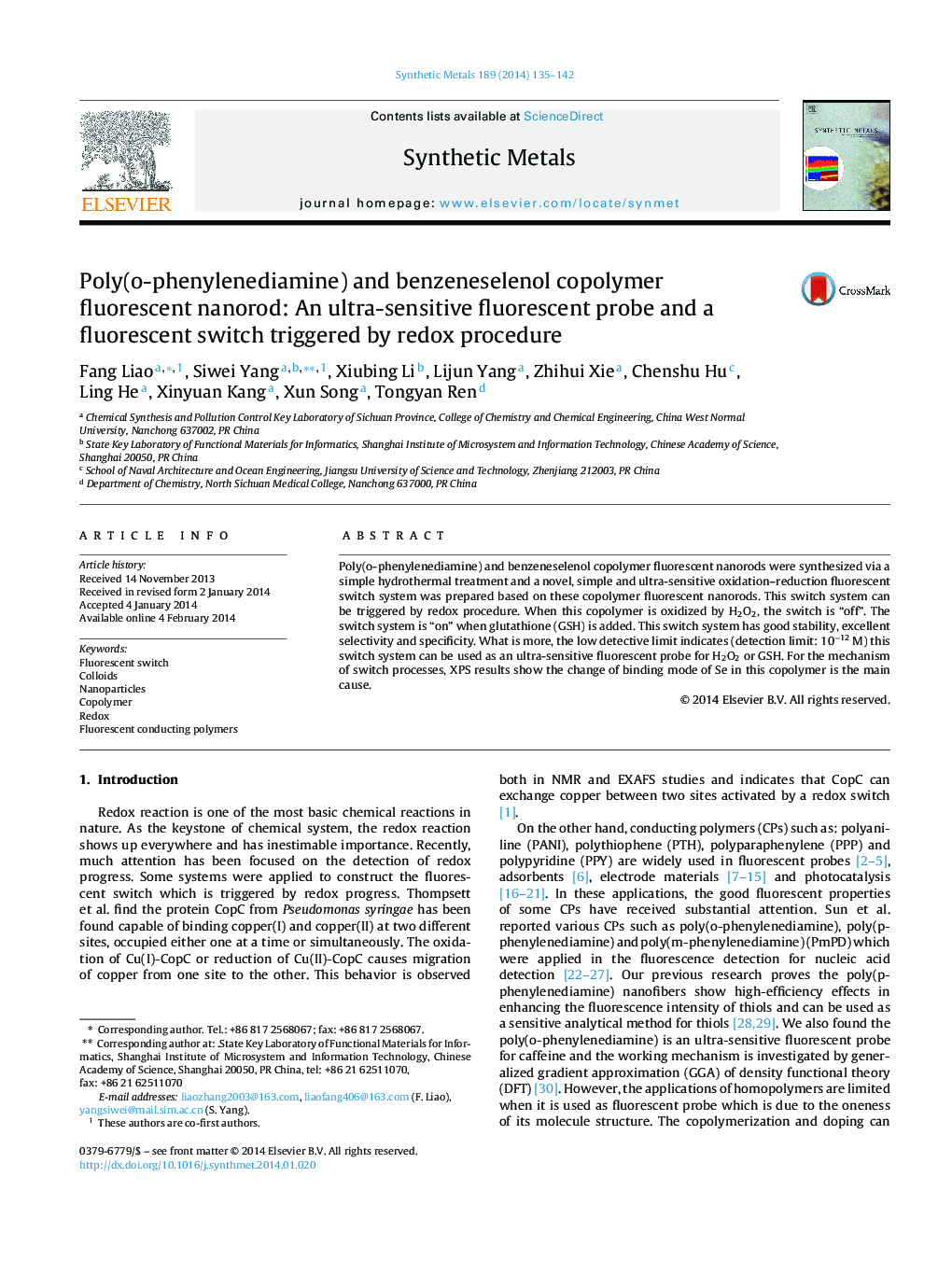| کد مقاله | کد نشریه | سال انتشار | مقاله انگلیسی | نسخه تمام متن |
|---|---|---|---|---|
| 1441049 | 1509388 | 2014 | 8 صفحه PDF | دانلود رایگان |

• Poly(o-phenylenediamine) and benzeneselenol copolymer nanorods are synthesized via a simple way.
• An ultra-sensitive redox fluorescent switch is prepared based on copolymer nanorods.
• The switch system is triggered by redox procedure.
• The switch system can be used as an ultra-sensitive fluorescent probe for H2O2 and GSH (10−12 M).
• The working mechanism of this switch system is also studied by XPS.
Poly(o-phenylenediamine) and benzeneselenol copolymer fluorescent nanorods were synthesized via a simple hydrothermal treatment and a novel, simple and ultra-sensitive oxidation–reduction fluorescent switch system was prepared based on these copolymer fluorescent nanorods. This switch system can be triggered by redox procedure. When this copolymer is oxidized by H2O2, the switch is “off”. The switch system is “on” when glutathione (GSH) is added. This switch system has good stability, excellent selectivity and specificity. What is more, the low detective limit indicates (detection limit: 10−12 M) this switch system can be used as an ultra-sensitive fluorescent probe for H2O2 or GSH. For the mechanism of switch processes, XPS results show the change of binding mode of Se in this copolymer is the main cause.
Figure optionsDownload as PowerPoint slide
Journal: Synthetic Metals - Volume 189, March 2014, Pages 135–142